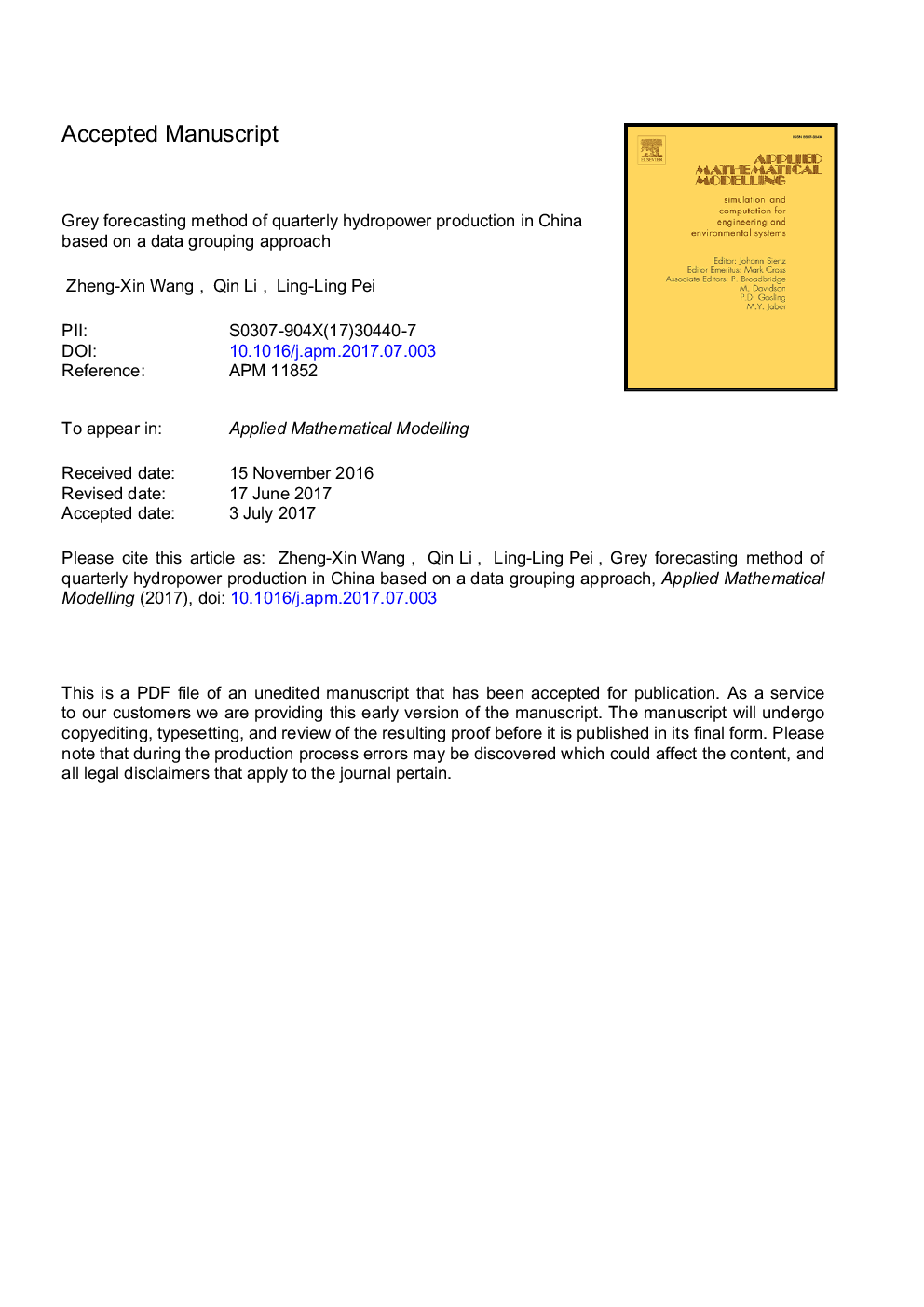| Article ID | Journal | Published Year | Pages | File Type |
|---|---|---|---|---|
| 5470796 | Applied Mathematical Modelling | 2017 | 24 Pages |
Abstract
Grey model GM (1,1) has been widely used in short-term prediction of energy production and consumption due to its advantages in data sets with small numbers of samples. However, the existing GM (1,1) modelling method can merely forecast the general trend of a time series but fails to identify and predicts the seasonal fluctuations. In the research, the authors propose a data grouping approach based grey modelling method DGGM (1,1) to predict quarterly hydropower production in China. Firstly, the proposed method is used to divide an entire quarterly time series into four groups, each of which contains only time series data within the same quarter. Afterwards, by using the new series of four quarters, models are established, each of which includes specific seasonal characteristics. Finally, according to the chronological order, the prediction results of four GM (1,1) models are combined into a complete quarterly time series to reflect seasonal differences. The mean absolute percent errors (MAPEs) of the test set 2011Q1-2015Q4 solved using the DGGM (1,1), traditional GM (1,1), and SARIMA models are 16.2%, 22.1%, and 22.2%, respectively; the results indicated that DGGM (1,1) has better adaptability and offers a higher prediction accuracy. It is predicted that China's hydropower production from 2016 to 2020 is supposed to maintain its seasonal growth with the third and first quarters showing the highest and lowest productions, respectively.
Keywords
Related Topics
Physical Sciences and Engineering
Engineering
Computational Mechanics
Authors
Wang Zheng-Xin, Li Qin, Pei Ling-Ling,
